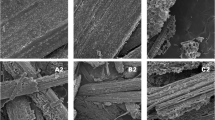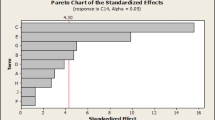Abstract
The fermentability of commercial xylans and municipal waste hemicelluloses in the presence of Clostridium sp. (C.SAIV; ATCC 700188) has been evaluated. Teak, deal wood, banana stalk and bagasse of the municipal waste contained significant amounts (approx. 12 %–23 %) of hemicellulose. Under optimized growth conditions, the growth rate of C.SAIV was improved as indicated by an increase in the concentration of ethanol in the culture broth. Commercial xylans were utilized fairly efficiently and ethanol formed from larch wood xylan and bagasse hemicellulose was at least 64 mM. The amount of ethanol formed from the bagasse hemicellulose was at least three times higher than any other reported value. The current study also indicated that the source and composition of hemicellulose played an important role in determining the fermentability of the substrate for some microorganisms.
Similar content being viewed by others
Author information
Authors and Affiliations
Additional information
Received: 19 June 1996 / Received revision: 22 October 1996 / Accepted: 25 October 1996
Rights and permissions
About this article
Cite this article
Murty, M., Chandra, T. Fermentability of hemicelluloses extracted from municipal waste and commercial xylans by Clostridium sp.. Appl Microbiol Biotechnol 47, 212–217 (1997). https://doi.org/10.1007/s002530050915
Issue Date:
DOI: https://doi.org/10.1007/s002530050915




